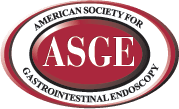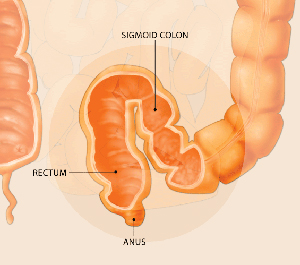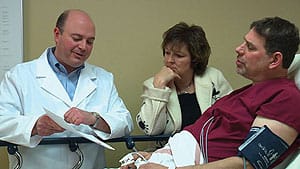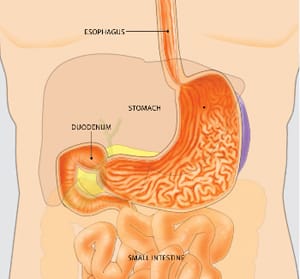This information is intended only to provide general guidance. It does not provide definitive medical advice. It is important that you consult your doctor about your specific condition.

Don't have Adobe Reader? Download it here
What is flexible sigmoidoscopy?
Flexible sigmoidoscopy lets your doctor examine the lining of the rectum and a portion of the colon (large intestine) by inserting a flexible tube about the thickness of your finger into the anus and slowly advancing it into the rectum and lower part of the colon.
What preparation is required?
Your doctor will tell you what cleansing routine to use. In general, preparation consists of one or two enemas prior to the procedure but could include laxatives or dietary modifications as well. However, in some circumstances your doctor might advise you to forgo any special preparation. Because the rectum and lower colon must be completely empty for the procedure to be accurate, it is important to follow your doctor's instructions carefully.
Flexible sigmoidoscopy enables the doctor to carefully examine the rectum and sigmoid colon, and to take tissue from the lining of the colon for a biopsy.
Should I continue my current medications?
Most medications can be continued as usual. Inform your doctor about medications that you're taking, particularly aspirin products, anti-coagulants (blood thinners such as warfarin or heparin), or clopidogrel, as well as any allergies you have to medications.
What can I expect during flexible sigmoidoscopy?
Flexible sigmoidoscopy is usually well-tolerated. You might experience a feeling of pressure, bloating or cramping during the procedure. You will lie on your side while your doctor advances the sigmoidoscope through the rectum and lower part of the colon. As your doctor withdraws the instrument, your doctor will carefully examine the lining of the intestine.
If polyps are found during the procedure, the doctor may take a tissue sample for biopsy. Some polyps are totally harmless. Others, though benign, may have a small risk of becoming cancerous.
What if the flexible sigmoidoscopy finds something abnormal?
If your doctor sees an area that needs further evaluation, he or she might take a biopsy (tissue sample) to be analyzed. Obtaining a biopsy does not cause pain or discomfort. Biopsies are used to identify many conditions, and your doctor might order one even if he or she doesn't suspect cancer. If your doctor finds polyps, he or she might take a biopsy of them as well. Polyps, which are growths from the lining of the colon, vary in size and types. Polyps known as "hyperplastic" might not require removal, but other benign polyps known as "adenomas" have a small risk of becoming cancerous. Your doctor will likely ask you to have a colonoscopy (a complete examination of the colon) to remove any large polyps or any small adenomas.

Flexible sigmoidoscopy is almost always done on an outpatient basis. The procedure typically takes less than 15 minutes.
What happens after a flexible sigmoidoscopy?
Your doctor will explain the results to you when the procedure is done. You might feel bloating or some mild cramping because of the air that was passed into the colon during the examination. This will disappear quickly when you pass gas. You should be able to eat and resume your normal activities after leaving your doctor's office or the hospital, assuming you did not receive any sedative medication.
What are possible complications of flexible sigmoidoscopy?
Flexible sigmoidoscopy and biopsy are safe when performed by doctors who are specially trained and experienced in these endoscopic procedures. Complications are rare, but it's important for you to recognize early signs of possible complications. Contact your doctor if you notice severe abdominal pain, fevers and chills, or rectal bleeding. Note that rectal bleeding can occur several days after the exam.

Flexible sigmoidoscopy enables the doctor to carefully examine the rectum and sigmoid colon, and to take tissue from the lining of the colon for a biopsy.
Don't have Adobe Reader? Download it here




